
The best fabrics to keep you warm in winter
You want to huddle up as warm and comfortably as possible as the weather cools off, don't you? It looks easy enough: all you must do is put on your bulkiest clothing and go outside. Will it be the right choice, though? Thick often refers to difficulty, heaviness, and stiffness of movement; it may not always imply warmth. This complete guide will help you choose the warmest fabrics for your winter clothing to stay warm in any weather and feel fashionable, comfortable, and confident.
What is the warmest fabric in the world?
Wool is the warmest fabric used to sew winter wardrobe items from all textiles. According to years of testing and scientific research, it retains the most heat. In contrast, wool's heat transfer coefficient is about half that of silk's (0.039 vs. 0.066). This implies that it has far greater heat retention potential.
Naturally, materials that keep heat in, as well as those that keep out cold air, also have a significant impact. Therefore, in addition to wearing multi-layered clothes and selecting warm textiles, you also need to consider other factors like breathability, density, and water resistance. The inclusion of wool in the composition has no meaning without considering other factors because it may be supplemented with fibers from other materials that have an impact on the outcome. Additionally, the wool comes in various densities and texture thicknesses; Icelandic wool is thought to be the warmest of all woolen materials. Since its coefficient is 0.016, which is higher than usual, we can declare that this material is the warmest garment material available. However, everything depends on the type of winter clothing and its application, in which case some materials will be more successful than others.
Best sweater material for winter
Warm materials and fabrics are widely available nowadays and evoke a similar feeling. Depending on your preferences, it can be the standard knitwear for everyone or even some cutting-edge fibers. However, keep in mind that knitwear eventually loses shape and appearance, and heat may not always result in the appropriate amount of storage. Wool is the warmest material for sweaters if you want truly good quality. It keeps the body warm, feels good on the skin, and allows air to pass through. Another plus is the variety you can buy a sweater of any design, thickness, and texture.
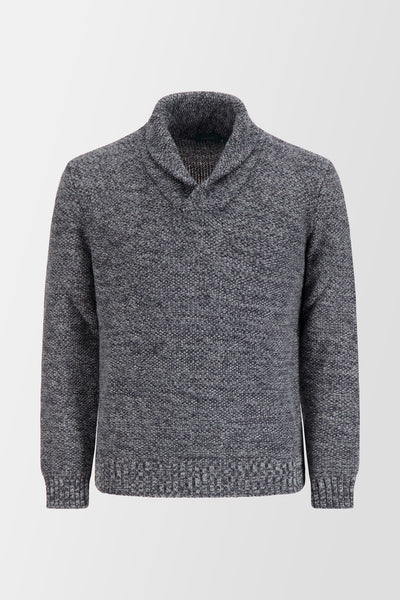
ZANONE GREY PESCATORE SURMOUNTED V NECK
Also, pay attention to blended wool; for example, fabrics are warm if there is still acrylic in the composition, but the presence of silk gives smoothness and noble shine to the texture.
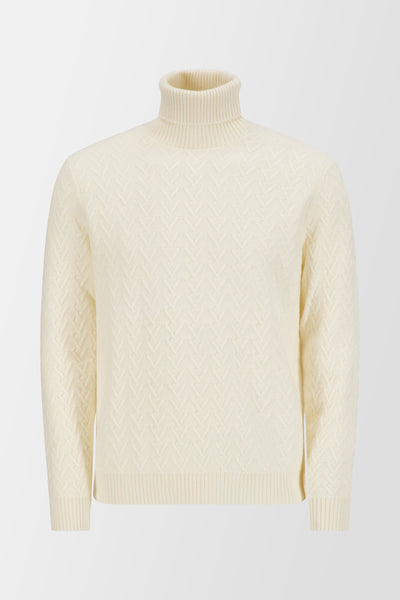
ZANONE BEIGE TURTLE NECK SWEATER
Luxury brands can offer a wide range of cashmere sweaters - heavenly bliss for the winter season. They feel weightless on the body and keep you warm even in the bitter cold, and you won't feel hot in cashmere clothes in late spring. The material's unique properties allow you to feel comfortable in a wide range of temperatures.
Warmest jackets material
To find the best material for this type of clothing, you need to consider the style of the garment. So, it is crucial to consider the outer layers and filler for a down jacket. In this case, the best winter jacket material is a combination of polyester fibers outside and down or feather inside. To give the image an elegant business look, some people prefer to set aside down jackets in favor of structured styles. For such outerwear, wool is the best choice, bringing warmth and comfort in cold temperatures.
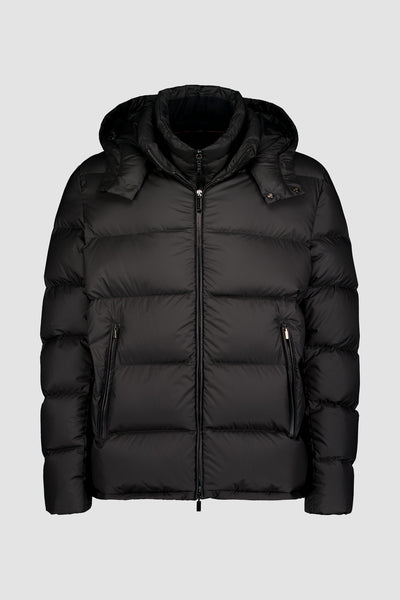
ZILLI BLACK DOWN SHORT JACKET WITH REMOVABLE HOOD
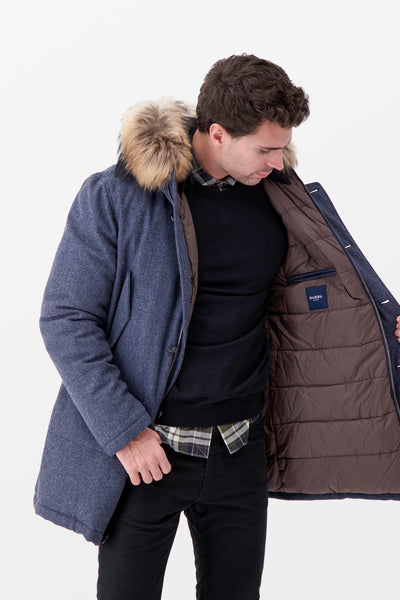
Is polyester warm?
Polyester's thermal insulation qualities are not as high as those of wool, cotton, or acrylic, making it a less warm material for apparel. But there are a lot of qualities and aspects about this cloth that will come in extremely handy in the winter, fall, or early spring. Polyester does not absorb smells, but it reflects moisture, dries fast, and blocks off the wind. As a result, base layers of outerwear frequently employ this material.
Is cotton warm?
While cotton is a great natural hypoallergenic material that works well when kept close to the body, it is advisable to use alternative materials for external cold protection. It's not used to stitch outerwear but as a foundation for underwear, hats, pants, pajamas, and a lining for winter coats. Remember, the golden rule of winter dressing is layering. In this instance, having a cotton T-shirt in your closet combined with a shirt would work wonders. Additionally, keep an eye on blended textiles that contain cotton. One such blend is cotton and down, which works well for street sportswear or ski suits.
Is silk warm?
The list of warm fabrics continues with silk, a natural material that keeps you warm in winter. Because of its moisture-absorbing properties, it is not used for outerwear, but because of its high thermal conductivity, it is included in base layers. Silk retains heat much better than a combination of cotton with acrylic or polyester. It should also be noted that the presence of silk in the composition of sweaters, blazers, and cardigans will help clothes for a long time to keep their shape and appearance even with constant wear.
Whatever the winter this year, choosing clothes from the best fabrics to keep warm, you will always be able to feel comfortable. Original Luxury store offers clothes of famous brands, which are characterized by high-quality materials and tailoring, durability, and thoughtfulness of styles. Pay attention to the new collections; with them, you will successfully prepare for the winter season to meet it in an atmosphere of warmth, comfort, and luxurious style.



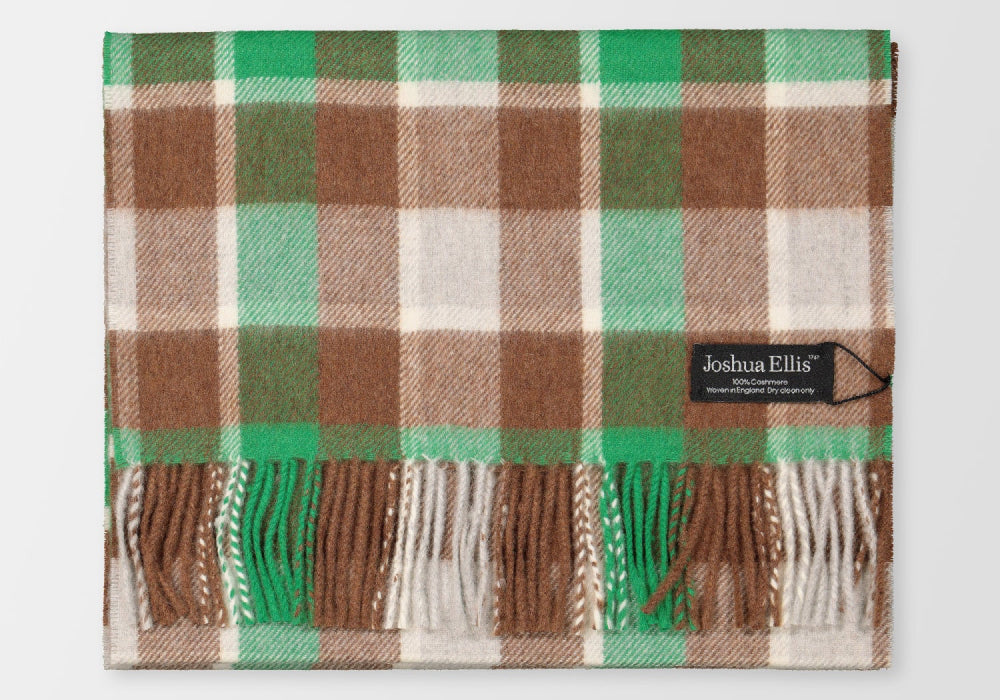

Leave a comment
This site is protected by hCaptcha and the hCaptcha Privacy Policy and Terms of Service apply.